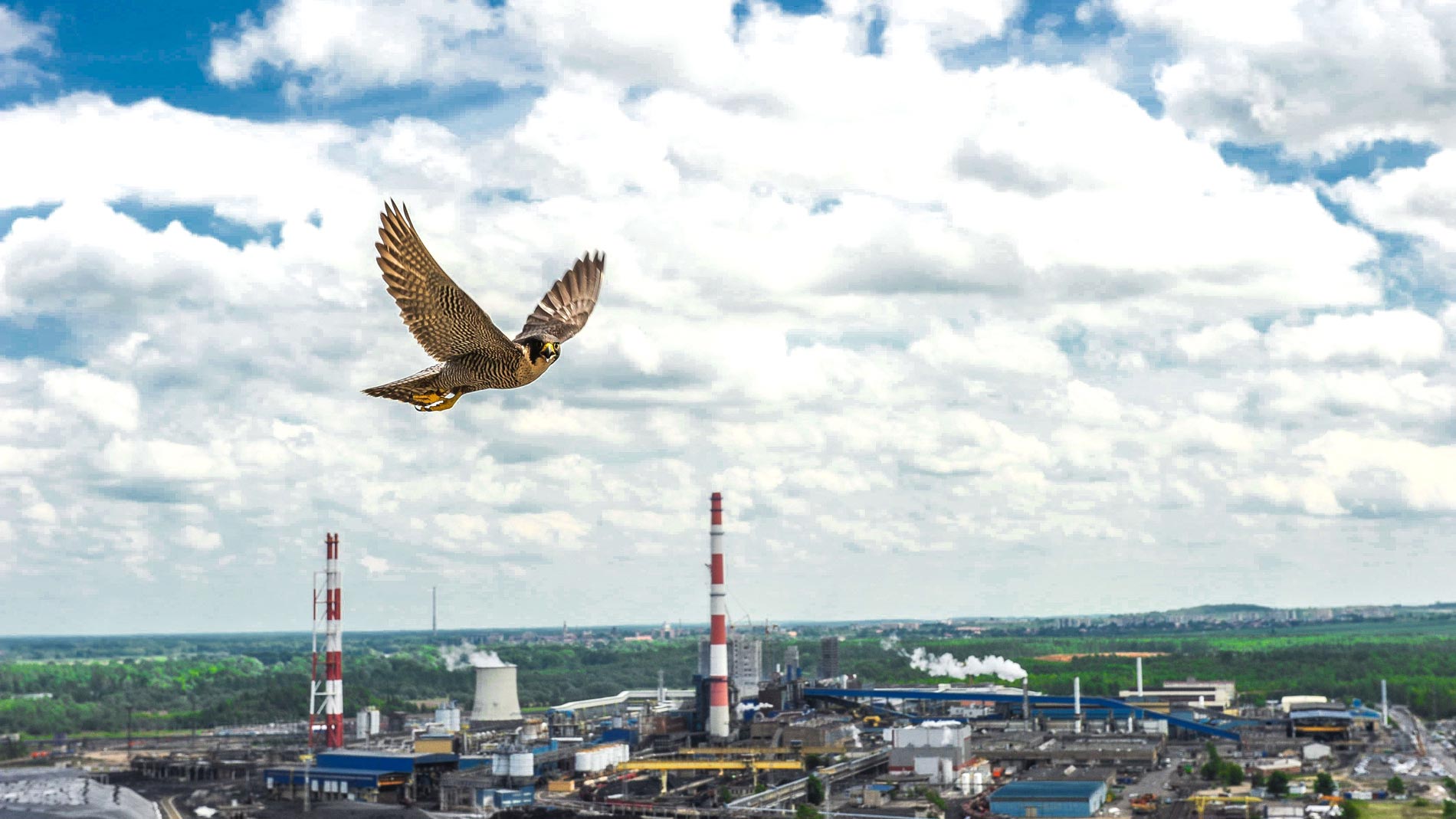11 km – Tailings Division, 2 km – Cedynia Wire Rod Plant, 7 km – Głogów Copper Smelter and Refinery
Activities to preserve biodiversity

At KGHM, we endeavour to protect valuable natural resources as much as possible. Preserving the balance of the natural environment in coexistence with industry creates a unique socio-economic value. In order to meet the environmental requirements placed on us, we continuously strive to reduce our impact on the areas adjacent to our installations by taking measures that eliminate potential risks. In this way, we pursue a strategy of rational shaping of the environment and management of natural resources.
KGHM Polska Miedź takes proactive measures to preserve – and where it is not possible – to compensate for lost biodiversity, and to ensure responsible management of land and forests.
The Divisions of KGHM Polska Miedź S.A. do not operate in, or in the direct vicinity of, areas of outstanding natural heritage (defined as national parks, nature reserves or Nature 2000 areas). Further away, i.e. from a few to over a dozen kilometers away, are areas of high natural habitat or landscape value, covered by various forms of protection schemes, amongst which it is worth noting the following:
Nature 2000 Special Bird Protection Areas:
"Lęgi Odrzańskie” PLB020008
Nature 2000 Special Habitat Conservation Areas:
Kozioróg in Czerna PLH020100
2.7 km – Głogów Copper Smelter and Refinery
“Lęgi Odrzańskie” PLH020018
11 km – Tailings Division, 2 km – Cedynia Wire Rod Plant, 7 km – Głogów Copper Smelter and Refinery
"Pątnów Legnicki” PLH020052
9 km – Legnica Copper Smelter and Refinery
Nature reserves:
Buczyna Jakubowska
within the concession area of the Polkowice-Sieroszowice Mine
Uroczysko Obiszów
within the licensed area of the Polkowice-Sieroszowice Mine
Żukowskie Śnieżyce
within the licensed area of the Rudna Mine
Skarpa storczyków
approx. 1 km – Cedynia Wire Rod Plant
Dalkowskie jary
6 km – Głogów Copper Smelter and Refinery
Nature and landscape conservation areas:
Grodowiec
licensed area of the Rudna Mine
Guzicki Potok
licensed area of the Rudna Mine
Trzebcz
licensed area of the Rudna Mine
Ecological sites:
Łęgi Głogowskie
former protection zone of the Głogów Copper Smelter and Refinery
Glinki in Lasek Złotoryjski
1 km – Legnica Copper Smelter and Refinery
Lena
in the vicinity of areas managed by the Tailings Division
Animate and inanimate nature monuments (all divisions).
All investment projects executed by KGHM Polska Miedź S.A. which require an environmental impact assessment, pursuant to the Act of 3 October 2008 on the availability of information about the environment and its protection, participation of the public in environmental protection and on environmental impact assessments (consolidated text: Journal of Laws of 2021, item 247) include detailed documents which describe the impact of the project on the natural environment. This work involves experts from many fields (including: ornithology, zoology, botany), who highlight potential risks and present recommendations for actions ensuring maximum extent of mitigation of the impact of a given project.
Forested areas
Forests have been created in the areas of former protective zones currently managed by the smelters. Near the Legnica Copper Smelter and Refinery, forested areas cover about 385 ha, and near the Głogów Copper Smelter and Refinery – 872 ha. At present, this area is a unique “ecological niche”, being the habitat to birds, small amphibians and lush vegetation.
Moreover, the Tailings Division manages forests over the area of about 212 ha in the municipalities of: Lubin (about 58 ha), Polkowice (about 6 ha), Rudna (about 38 ha) and Warta Bolesławiecka (about 110 ha).
KGHM covers Lower Silesia with forests
Almost 60 thousand tree saplings were planted as commissioned by KGHM. Thousands of oaks, pines and birches will make green an area around three villages in the Copper Basin.
Nearly 9 hectares of land around the Żelazny Most Tailings Storage Facility was subject to forestation to compensate for the green areas occupied by the Southern Quarter being built. The project of forestation of post-agricultural areas owned by the State Treasury has been performed by the Lubin Forest District (Nadleśnictwo), commissioned by KGHM. The project has covered surroundings of the villages of Rudna, Stara Rudna and Pieszkowice. By 2022, KGHM plans further plantings within the Lubin Forest District on the surface area of nearly 100 hectares.
57,510 plants altogether were planted, including:
- Almost 35 thousand pines
- Over 7.5 thousand birches
- Nearly 12 thousand oaks
- 3.5 thousand alders
- 1 thousand elms
The planting around the Żelazny Most reservoir is not the only action on the part of the Company for the environment. Forestations were also carried out in the Forest Districts of Wołów, Chocianów and Przemków. KGHM also participates, among others, in the project of the so called “Forest Coal Farms”, developed and managed by the General Directorate of State Forests, whose idea is to reconstruct forests and introduce new forestations to limit the amount of carbon dioxide in the atmosphere by increasing CO2 absorption by forest complexes.
Peregrine falcon
In 2008, the Głogów Copper Smelter and Refinery recorded an unsuccessful nesting attempt of a peregrine falcon. To allow falcons to breed safely, a decision was taken to mount a breeding box on one of the smelter’s stacks. In autumn 2008, a breeding box was mounted on the stack of Głogów II Copper Smelter and Refinery, the so-called “little clover”.
The felicitous nature of this location was confirmed on 31 March 2009, when 3 peregrine falcon eggs were found in the mounted nest. Three nestlings hatched after a month. They were ringed in mid-May, and left their home for good in August.
In 2011, the Company took actions to allow the falcon family to be watched on-line. Since 2012, the life of Głogów falcons can be viewed online on the “Sokół” Association website. Every year, the names for the birds are chosen in a contest held on the “Sokół” Association website. KGHM is a co-organizer of the contest and funds awards for the winners. Since the breeding box was mounted in Głogów II Copper Smelter and Refinery, 36 falcons have successfully hatched, and 35 of them have been leg-banded.
Ecological site - Łęgi Głogowskie
On 28 October 2005, at the request of the Głogów Copper Smelter and Refinery, the Lower Silesia Voivode formally established the “Łęgi Głogowskie” ecological site, to protect the important natural features of, among others, the old Odra riverbed, vegetation clusters, from water plants and reedbeds to rich deciduous forests with a multitude of protected flora and fauna species. The site covers a terrace area of 605.6 ha between the Odra River’s embankments, and stretches over land to which KGHM holds a legal title.
Every year, the Głogów Copper Smelter and Refinery undertakes treatment measures to maintain the area, restore habitats and protect the species living in the “Łęgi Głogowskie” ecological site. The measures include, among others, cutting grasslands in a manner retaining patches of late-maturing vegetation (Cnidion meadows) and cutting away reeds in meadow habitats, removal of self-sown trees and shrubs which tend to expand into grassland habitats, planting of trees and shrubs of native species typical for the forest habitats in locations of former foreign trees plantations. Construction of habitat rows for birds, hanging daytime shelters for bats and breeding boxes for birds, building of clay and wood structures as substitute habitats for insects nesting in clay, tidying up works – regular removal of illegally dumped waste.
